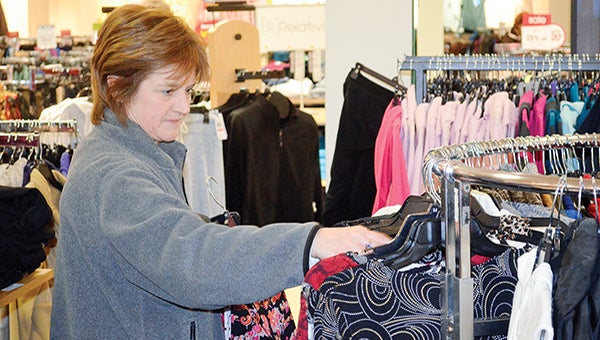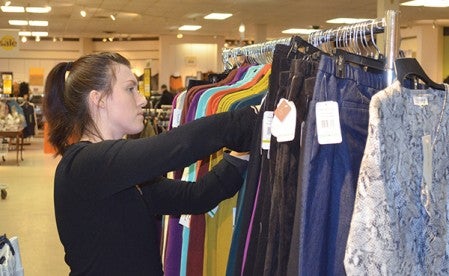Locals leery of clothing sales tax
Published 7:41 am Tuesday, January 22, 2013

Jeanine Nelson browses clothing racks at the Austin Younkers Monday evening. -- Kevin Coss/kevin.coss@austindailyherald.com
Business leaders say plan could affect number of out-of-state shoppers
Local business leaders agree Austin has a clear advantage over northern Iowa towns when it comes to the retail clothing business: no sales tax. But if Gov. Mark Dayton and other Democrats get their way, that could change this year.
Corey Anderson, manager of Games People Play in Austin, said a lot of Iowans cross the border because there is no sales tax on clothing in Minnesota.
“Because we’re this close to Iowa, that would play a big part for us,” he said.
Anderson said other businesses benefit besides Games People Play — which sells a variety of sports apparel — as Iowans also do grocery shopping and take care of other needs in Austin since they’re here. But Dayton, who was scheduled to release his budget this morning, is expected to target clothing for a first-ever sales tax.
“This is a significant moment and a significant opportunity,” said Dayton’s chief of staff, Tina Smith. “For over a decade, the amount of money we raised and how we raised it, the amount we spent and how we spent it, was out of whack. The governor’s intention is to address that big problem.”
Click here for an update on Dayton’s proposed budget
Over the weekend, Dayton’s team was piecing together the final components of a proposal that could yield the most comprehensive tax overhaul in a generation. Emboldened by a DFL-controlled Legislature, the Democratic governor’s budget outline proposes to wipe out a $1.1 billion projected deficit, realign the state’s tax burden and boost state spending.
The new budget could stabilize historically uneven revenue streams that have caused years of budget shortfalls. But it also could open Dayton to a deluge of criticism that he is gorging on a buffet of tax increases that could damage the state’s fragile economy.
The Mall of America, the state’s largest tourist destination, remains firmly opposed to a clothing tax. Mall executives say the state’s tax-free clothing gives it an enormous edge when it markets to other states, even other countries.
“Once we can’t use the word ‘no’ sales tax on clothing, we lose that competitive advantage,” said Maureen Bausch, executive vice president of business development for the mall.
Sandy Forstner, executive director of the Austin Area Chamber of Commerce, said the legislature needs to listen to what the Mall of America representatives are saying. He said while he knows where Democratic leaders are coming from with new tax revenue, he said he always looks at any discussion on tax increases with a very weary eye.
“The basic idea to broaden the sales tax base and make it more stable, I understand that, but I haven’t seen how much the rate would be reduced, and that would be important to know,” he said.
Forstner said he’s eager to see what the Governor has to say, but said the discussion should start on the spending side, not with new taxes.
“We’re talking about raising $1 billion more in revenue, and we still don’t have enough,” he said.
At 6.8 percent, Minnesota’s sales-tax rate is among the highest in the nation, but it is applied to a far narrower base of goods and services than most states. Groceries, clothing and prescription drugs are exempt from the Minnesota sales tax. So are legal fees, haircuts and a long list of other exemptions. That makes the state’s sales-tax stream more volatile than those of most states.
“If we don’t take a look at that, it’s a burden on everyone else,” Revenue Commissioner Myron Frans said. “Everybody is paying a higher rate because of those exemptions. We are trying to make the entire system as fair to everyone as possible.”
Extending the sales tax to clothing, for instance, would bring in roughly $300 million a year.
Budget and tax experts say it would not be too hard to cobble together a list of new items or services to tax and get close to $1 billion in new sales-tax revenue even with a lower rate.
—The Minneapolis Star Tribune contributed to this report.






